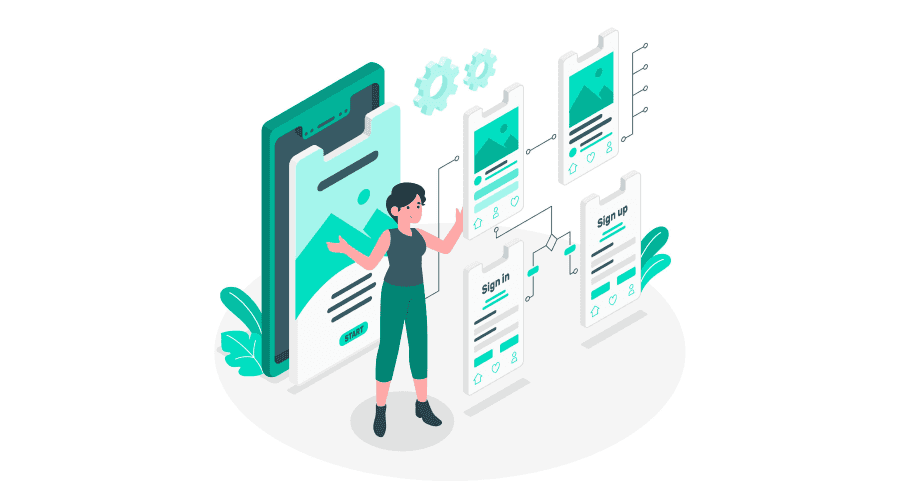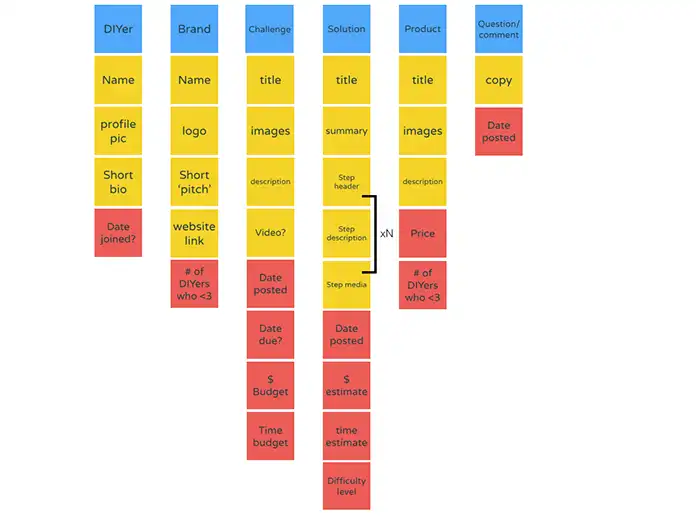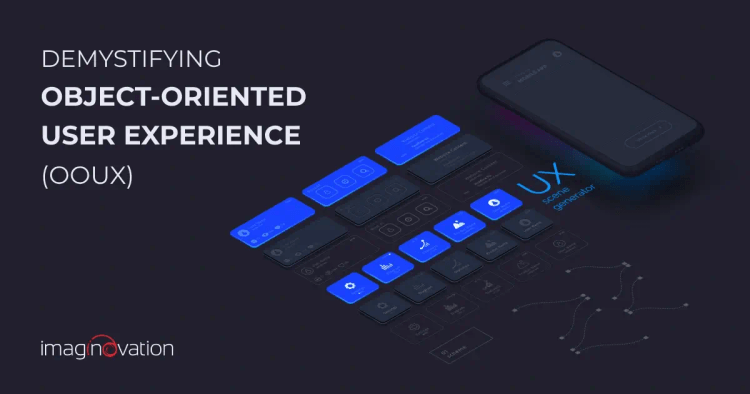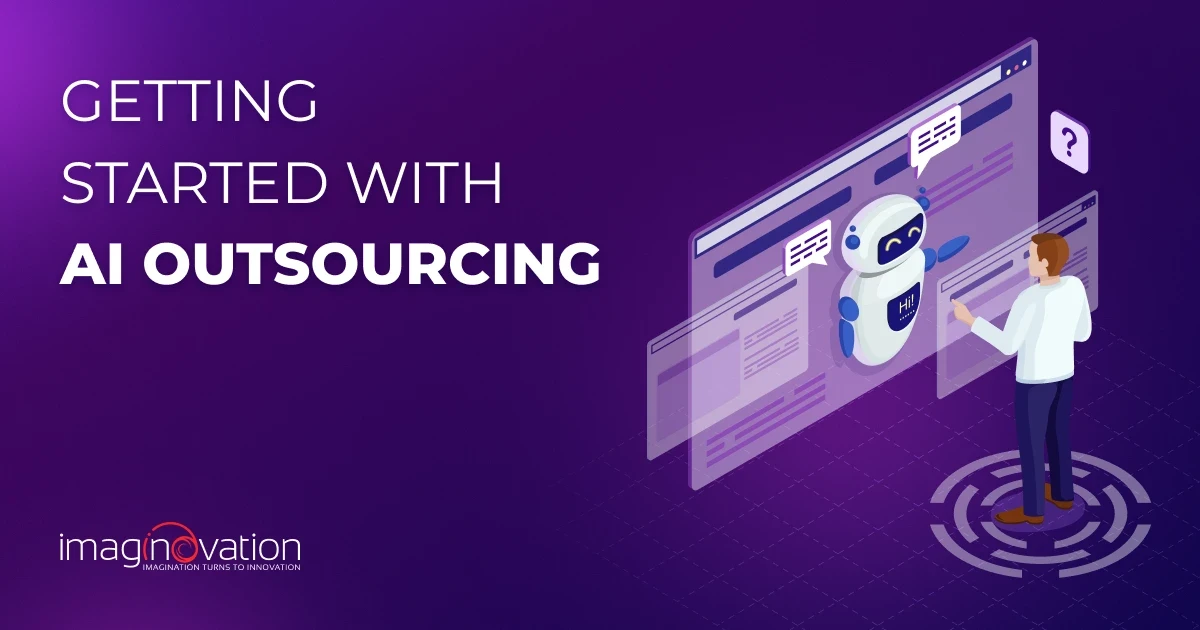Ever heard of Object-Oriented User Experience (OOUX)? If not, it’s high time you acquaint yourself with this pivotal UX design strategy.
As leaders in the tech space, understanding OOUX is almost non-negotiable. It’s a process that, when properly executed, can shape products that stand out in the most cluttered markets.
Join us as we break down the intricacies of OOUX, providing a roadmap to a more intuitive user experience. Let's venture into the dynamic world of OOUX, shall we?
What is Object-Oriented User Experience?
Let's picture the traditional approach. The digital product teams portion out complexity by task flows, features, or user stories. Thus, the focus is on breaking up complexity by the verbs. However, the approach often leads to disjointed user experiences.
Object-Oriented User Experience (OOUX) offers a better way to divvy up complexity. The focus of OOUXers is slicing by nouns (object-orientally). It's simple: All people think in objects, and designers or end-users are no different. So, when we make user experiences more object-oriented, they become more intuitive.
The process aids in planning a system of interacting objects and information within objects such as your website app or digital tool. The stress with the approach is an object or noun first approach. OOUX assists a spiderweb-like system organization as opposed to the traditional hierarchical tree structures.
Let's look at an example: Picture your project like a cafeteria. You will need tables, chairs, a counter, a kitchen stove, a coffeemaker, and so on for your business. All of these are objects. When one thinks of the project, it is natural to create a mental model and think in terms of images and not as a process. Therefore, it would help when the research focuses on a clear picture of what those images would be.
OOUX seeks to focus on the users’ “mental models'' around objects and information. Moreover, it promotes heterarchies over hierarchies. What's a heterarchy? It is a system of organization where elements are unranked. Thus, they have the potential to be ranked in an infinite number of ways.
Key takeaways of OOUX:
- It is a design methodology
- It focuses on an object-oriented approach
- It boosts the creation of a better product
Let’s look at some principles.
Principles of the OOUX
The essence of OOUX lies in its core principles, which include understanding and defining objects and delineating their relationships. Further, one will need to focus on determining possible actions on objects and organizing them for seamless navigation. Here’s a quick overview:
- Setting up of objects: Here, one can consider setting up of objects based on the users’ and brands’ needs and goals.
- Placing core content: It is typically the core content that opens up the objects and makes them more apparent to the users.
- Create associations between the objects: The objects in the project will have relationships with other objects, so it is necessary to create associations between them.
- Adding actions to the objects: First, one must think of the creation of objects then, the adding of actions can take place, which assists the users in reaching their goals.
- Test: OOUX happens before the development process, so one can consider changing elements if needed.
Bottom line: OOUX brings in more clarity on how your final product will look like.
Benefits of Object-Oriented User Experience

Let's take a moment to think. Poor inventory leads to horrific user experiences in real life. Picture a retail store where you can see crumpled piles of clothes, unpacked boxes of inventory, or unkempt displays. Naturally, with a store that’s not maintained well, such as the one described, there will be a drop in footfall and some very unhappy customers.
When it comes to the digital world, a lot of this visible mess may stay hidden; however, there can be visibly irate customers. The reasons can be attributed to poor digital organization, insufficient data, dead-end links, outdated visuals, and so on.
Enter OOUX, which can reset the entire experience and benefit all stakeholders—employees, customers, and businesses. How? OOUX works on defining and designing 'objects' before 'actions.' It is a method that aligns aptly with how users perceive the real-life world. Here are some benefits.
- Improved User Experience: Since OOUX works around designing around objects (things) rather than actions, it resonates with users’ mental models. Thus, developers can come up with an interface that’s more intuitive and coherent to users, which leads to seamless UX.
- Better Collaboration: OOUX works early on defining objects and their relationships. Thus, the entire team, which includes developers, designers, and other stakeholders, has a clear picture of the system’s structure. It helps promote team synergy, eliminating friction.
- Encourages Re-usability: A great advantage of the object-oriented approach is that content that’s typically complex or expensive can be modeled for reuse from the outset. The components designed can be used across systems and use cases. Plus, it brings in efficiency as the need for work or even re-work is reduced.
- Improved Scalability and Consistency: The switch in approach for OOUX is on objects, which aids the creation of reusable components. The components created can be consistently employed throughout the design. The system benefits from scalability, where adding or modifying features is easy. Plus, the product enjoys visual and functional consistency. Thus, it makes a great starting point to grow your product with more objects.
- Boosts User Impressions: OOUX works on pressing a great impression on your end users that the products and services are of high quality. Plus, it serves to improve the digital storefront.
- More Sustainable: When it comes to real-world mental models, they are relatively more authentic, simple, and slow to change versus any digital design. Thus, when an information architecture is built around mental models, it means that the content stays more sustainable over time, which also includes any changes to the brand design or technologies.
- Supports accessibility: The design components reduce the cognitive load for all, which includes people with some cognitive impairments.
In essence, OOUX enhances the overall product quality while reducing potential pitfalls in the design process.
How to Implement Object-Oriented User Experience

Many organizations are looking forward to incorporating OOUX in their design. In this context, Airbnb and Facebook have already successfully implemented OOUX. For instance: Airbnb identified objects such as 'listings', 'hosts', 'guests', and 'reviews'. The objects and the way the users interact with them create an engaging and intuitive experience.
In the traditional UX design methodology, it may start with the interface or page layout. However, in OOUX, the implementation focuses on the system’s underlying structure, which results in a solid foundation for a more intuitive design. Here are some steps to consider when implementing OOUX:
Extract objects from goals
Based on user research, the developer team can draw out a list of goals that users wish to achieve in the system. In this stage, one can focus on highlighting nouns inside the goals. Further, one can tactfully extract objects from nouns.
For example, in a music streaming app, some objects might be ‘songs,’ ‘playlists,’ and ‘artists.’ In yet another context, for a project based on Election Results, some objects could be ‘candidates, ‘states,’ ‘seats,’ ‘ballot measures,’ and so on.
Define core content inside objects
Once the team identifies the list of objects, it is an excellent time to add detailed content to each object. It will include core content and metadata, which can be used to filter/sort the object.
Let's look at the example of the music streaming app. Each object has unique attributes—for instance, ‘songs’ might have attributes like ‘title,’ ‘duration,’ and ‘genre.’ In the Election Results project context, some attributes for the ‘candidates’ object could include ‘name,’ ‘bio,’ ‘age,’ ‘image,’ and so on.
Nesting objects for cross-linking
With all objects having their content, the next step is to identify inner relationships between them to understand how the object is connected with its sibling object.
The stage needs a structured understanding of how the objects correlate and interact with each other. It is an intricate process where dependencies of objects are also identified. For instance: In the music app, 'songs' as an object might get associated with 'artists', whereas 'playlist' has an excellent opportunity to get linked to 'songs', and so on.
Further, such relationships can be placed in a diagrammatic representation, which helps structure the system and maps it closely to the real-world relationships that users already understand.
Forced ranking
In this step, one can look at reordering the list under each object. The rearrangement can be from the most to the least important.
Object-Based Navigation
Finally, the process of object-based navigation is the process that aims to organize the system objects to facilitate seamless user navigation. The step considers the system's use cases, the objects' importance, the user's goals, usage frequency, and so on. The stage helps strategically prioritize user needs and objectives.
Also Read: The Role of UX in Product Development: In-Depth Overview
Challenges and Limitations of Object-Oriented User Experience
OOUX can help create intuitive user experiences, even with projects that have a lot of complexity. The developer and design teams can synthesize and build a robust and future-proof structure.
However, there are some drawbacks, which can be streamlined with future research and thoughtful crafting and refining. Let’s look at some limitations.
- Bulky-sized: Some Object-oriented programs could be bulky in terms of lines of code. What does it mean in the context of OOUX? It may spell the creation of a lot of documents that may need maintenance during the project, which will need meticulous handling, or else it may get challenging over time.
- More effort: When it comes to writing object-oriented programs, it needs more effort. Why? One needs to do the object and relationship mapping methodically. Thus, for OOUX, it can mean a strenuous effort to create the object model for a given product/project.
- Challenging maintainability: Here's the thing: if you aren't adding a new object, object-oriented programs may be hard to modify. In the same light, for OOUX, it may have consequences whenever you change an object and in the context of how the object behaves. Plus, it may affect other dependent objects.
Since OOUX focuses on things that matter most to people, it puts designers and developers on the right road, making it an absolute gift irrespective of the challenges. It is a powerful tool, and cross-functional teams can research and work around to overcome the difficulties.
Wrapping Up
Object-oriented User Experience (OOUX) could be the answer to addressing the complexity of products. With emerging success stories, it is like a refreshing breeze amidst storms of myriad design methodologies.
It's time to level up your business with OOUX and get ready to create mind-boggling intuitive experiences for your customers. Get ready to fire on all cylinders with OOUX!
Unleash the Power of User-Centric Design With Imaginovation
In the intricate landscape of User Experience, Object-Oriented User Experience (OOUX) stands as a beacon of innovation. It's your compass to design with user-centric precision.
At Imaginovation, we're your partner in navigating this exciting terrain. We don't just embrace OOUX theories; we put them into practice. With our UI UX design services, you can deconstruct complexity, simplify interactions, and create captivating digital products.
OOUX is your creative canvas for crafting user experiences that leave a lasting impact. So, are you ready to embark on this design journey? Let's connect today and turn your vision into reality. Your users are waiting for an unforgettable digital experience—let's make it happen.
Let's Talk.
Ready to build an app, but not sure where to start?
We've got you covered. Click the button below to get started.





